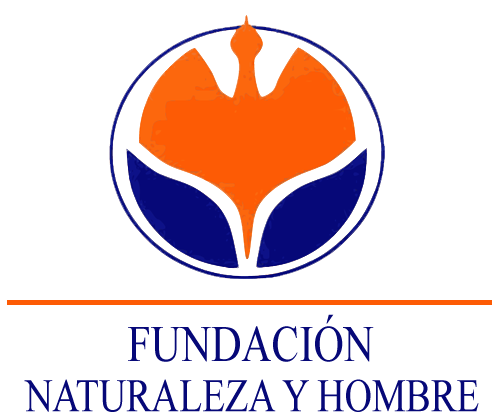PASIEGA MOUNTAIN AND EASTERN CANTABRIA
This is a comprehensive action programme that includes various actions aimed at the preservation and improvement of the biodiversity and ethnographic heritage of the Pasiega and Oriental Mountains of Cantabria, focusing specifically on the headwaters of the Pas, Miera, Asón and Soba valleys. Also included are the southern and eastern slopes of the massif, located in the provinces of Burgos and Vizcaya, with the valleys of Trueba and Carranza, respectively.
This programme combines actions for the restoration of forest habitats, participation in sustainable hunting management, awareness-raising of the local population regarding practices, monitoring of populations of wildlife species of interest, such as the rebecca (Rupicapra pyrenaica parva), the common wolf (Neophron percnopterus), the common vulture (Gyps fulvus) and the wildlife. golden eagle (Aquila chrysaetos).
The Programme has the collaboration of the Ministry of the Environment and Rural and Marine Environment, as one of the pilot projects within the framework of the National Rural Network.
Objectives of the programme
- Increase of the forest area of Pasiega and Oriental Mountain, through reforestation and subsequent care of the plantations.
- Increased knowledge and distribution of fauna and flora species of ecological and hunting interest in the Pasiega and Oriental Mountains.
- Maintenance of sustainable traditional uses in Pasiega and Oriental Mountain.
- Raising awareness among the local population about the misuse of fire for pasture management.
Main lines of action
The Floating Forests. Project for the restoration of the forest habitats of the headwaters of the Pasiega and Oriental Mountain, which during the 16th and 17th centuries suffered a heavy deforestation due to the use of wood from the forests for the construction of boats in the shipyards of the Bay and of artillery for them in the Royal Canyon Factories of Liérgan and La Cavada. This project is based on the planting of species specific to the habitat, such as beech (Fagus sylvatica), birch (Betula alba), oak (Quercus robur and Quercus petraea), ash (Fraxinus angustifolia) on land belonging to the Alto Pas Farm Network, included in Areas for Life and other spaces. guarded by FNYH through agreements with the owner municipalities.
Silvopastoral management in the Alto Pas and Miera Farm Network. The Farm Network, guarded by FNYH, is located at the head of the Pas and Miera valleys and includes a series of marginal livestock lands in the process of abandonment, dominated by steep slopes and access is made on foot or with stables, chosen by virtue of their natural interest. These farms are used as a model of sustainable silvopastoral management: they have been reforested and protectors have been placed on all the plants, so that a herd of lax sheep is in charge of controlling the growth of the pasture. In addition, some of the pasture huts on the farms have been restored to house the herd in winter and the tools and tools for work.
This project helps to preserve the landscape, cultural heritage and traditional uses, while encouraging the increase of biodiversity. Recovery of local breeds. In addition to the herd of lach sheep, the meadows of the Farm Network are grazed by other local breeds of great interest. The Pasiega red cow, a breed native to the Pasiega Mountain that was thought to be extinct, is the most relevant of the herd. Accompanied by a group of Losino horses, originally from the Losa Valley in Burgos, another Spanish donkey, a species that has been relegated from the cattle fields due to mechanization, in some cases, and abandonment, in others. All these species moult in a traditional way, which involves moving the cattle to low-altitude huts during the winter and to high-altitude meadows during the summer.
In addition, since 2010, the herds of local breeds are managed according to the guidelines of the Regulatory Council for Ecological Agriculture of Cantabria (CRAE-CN), a council to which FNYH has joined in order to offer a management model committed to the ecosystem and economically viable.
Sustainable hunting management. In 2007, FNYH signed a collaboration agreement with the Commonwealth of Cotos del Asón, which includes 14 hunting grounds in 15 municipalities. This cooperation agreement includes the monitoring and control of the hunts held in the areas by the Foundation’s guards; the monitoring of the rebecch populations and their distribution; the knowledge of the populations of game species such as the roe deer (Capreolus capreolus), the wild boar (Sus scrofa), the European hare (Lepus europaeus) ) and red partridge (Alectoris rufa) and advice on the drafting of hunting plans.
Fire surveillance. The FNYH nursery team carries out surveillance work at the headwaters of the Pas and Miera Valleys in order to detect and monitor possible arson fires. These fires usually have as their purpose the renewal of pasture in areas where the cessation of livestock exploitation has favored the growth of shrub species, such as the tojo (Ulex europaeus), as a next step in the ecological succession towards the original forest. Arson fires, when uncontrolled, have adverse environmental consequences, including erosion, soil loss, reduced natural regenerative capacity of forests, loss of biodiversity and reduced pasture productivity. World Heritage Site. FNYH is promoting the inclusion of the Pasiega Mountain in the list of sites listed as World Heritage Sites.
Environmental education. In the Pasiega Mountain educational activities are developed aimed at school and youth population, supported by the FNYH Farm Network and the immense natural, cultural and landscape heritage that the Mountain houses. In addition, there is an intensive volunteer program for the reforestation of various areas of the Pasiega Mountain, in order to improve ecological connectivity.
Species monitoring. The FNYH Nursery carries out a monitoring and census work on the most relevant species of the Pasiega Mountain. Along with the rebecch, a species reintroduced to the area by the foundation itself, the lioned vulture (Gyps fulvus), the alimoche (Neophron percnopterus) and the peregrine falcon (Falco peregrinus) are monitored.
In addition, FNYH is responsible for monitoring some of the Pasiega and Oriental Mountain grids in the Night Bird Sampling Program.
OFICINAS CENTRALES FNYH
Dirección: Av. De España Nº 25 Entlo, 39610 El Astillero Cantabria
Tlf: 942 55 91 19 / 679181483
fundacion@fnyh.org
DELEGACIÓN PARA PORTUGAL
Dirección: Rua do Conde de Redondo 8-5º dt 1150-115 Lisboa Tlf: (++351) 919 784 981 crc@erena.pt
CASA DE LA NATURALEZA-MARISMAS DE ALDAY
Dirección: C/ Alday (junto al parking de Valle Real), Maliaño, Cantabria
Tlf: 679 181 472
educacionambiental@fnyh.org
DELEGACIÓN PARA SUDAMÉRICA
Iguazú iguazuconservation@fnyh.org
ECOMUSEO-FLUVIARIUM DE LIÉRGANES
Dirección: C/ Camino Real, 9, 39722 Liérganes, Cantabria
Tlf: 942 52 81 96
fluviarium@fnyh.org
DELEGACIÓN PARA ÁFRICA
Tanzania fundacion@fnyh.org
VIVERO Y CENTRO ETNOBOTÁNICO EL PENDO
Dirección: 39609 Camargo, Cantabria
Tlf: 942 25 88 08
vivero@fnyh.org

ESTACIÓN BIOLÓGICA CAMPANARIOS DE AZABA
Dirección: Camino de La Alamedila, SN 37497 Espeja, Salamanca
Tlf: 923481401
campanarios@fnyh.org
